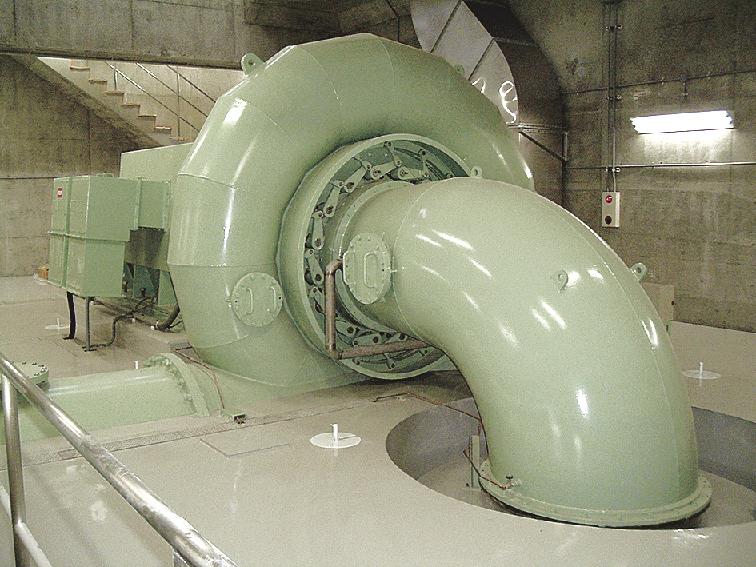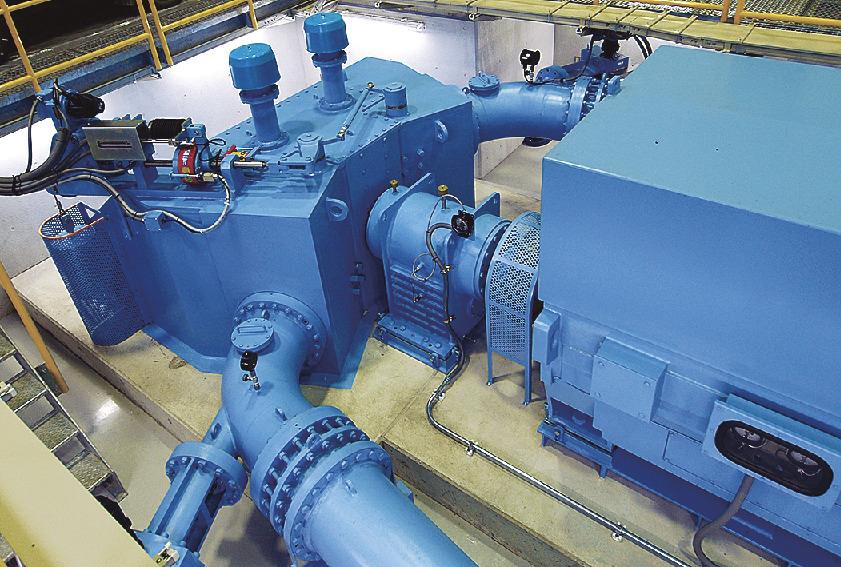Among renewable energy sources, small hydropower has a high capacity utilization rate of 60-70% and is expected to serve as a baseload power source. Since its establishment in 1932, Tanaka Hydropower (Atsugi City, Kanagawa Prefecture, President: Kenji Umemura) has focused on small-scale hydropower generation. With water turbine design as the core technology, we handle everything from equipment selection to design, manufacturing, assembly, on-site installation, performance testing, and subsequent maintenance for small hydropower plants. In addition to upgrading existing facilities to improve power generation efficiency, we will introduce the current status of small hydropower generation where the number of new constructions is steadily increasing and the company's efforts.

Director Umemura
□ Increase electricity generation by about 40 billion kWh □
The next basic energy plan (seventh), which is being reviewed by the Ministry of Economy, Trade and Industry, aims to increase renewable energy to around 40-50% of total energy by 2040 as an energy source to meet electricity demand. The plan is to increase it. Preliminary figures for fiscal 2023 show that renewable energy accounts for only 22.9% of total energy, which is a significant increase.

Francis Vortex Turbine
The target power source structure is: ▽ Solar power 22-29% (preliminary data for 2011: 9.8%) ▽ Wind power 4-8% (1.1%) ▽ Hydropower 8-10% (7.6%) ▽ Geothermal 1-2% (0.3%) ▽ Biomass 5-6% (4.1%). For the remaining power sources, nuclear power accounts for about 20% (8.5%), thermal power currently accounts for just under 70% (68.7%), and will decrease to about 30-40%.

Cross flow turbine
The target value of hydropower among renewable energy sources is approximately 10%, but compared to solar and wind power, it is less affected by weather and time of day and can generate stable electricity day and night all year round. For this reason, some power companies and local governments are focusing on hydropower.

Targo turbine
"By 2040, hydropower will increase by about 2 percent, but in terms of electric power, it will be equivalent to about 40 billion kilowatt hours. From now on, we will build new large-scale facilities," said Takuma Umemura, director of Tanaka Hydropower. "- Expanding the scale of dams and building large hydropower facilities. In fact, it is difficult to install such systems, and the burden will mainly fall on small and medium-sized hydropower plants with a capacity of 10,000 kilowatts or less and small hydropower plants with a capacity of 1,000 kilowatts or less." ``In recent years, we have received more and more inquiries about considering the possibility of small-scale hydropower generation.''
□Optimal proposal taking into account head and flow rate □
Hydropower generation was put into practical use in the late 1800s and various types of water turbines were invented. There was no patent on the basic structure of the water turbine and around 2012, when the Feed-in Tariff (FIT) system came into operation, many companies entered the small and medium hydropower business. However, water control is not easy and requires know-how. Due to the extremely high precision required, there are currently only about 5 equipment manufacturers in the small hydropower sector.
Tanaka Hydropower is the largest of these and one of its strengths is its diverse range of water turbines. We have a wide range of water turbines, including Francis spiral, Francis cylindrical, crossflow, Turgo and Belton, and we also have the design and manufacturing systems for vertical axis Francis turbines.
``For water turbines, we recommend the optimal turbine type based on the water head and flow rate, taking into account the water flow and installation location. In Japan, Francis spiral turbines are common, but they have high power generation efficiency and can be used in a wide range of applications. However, the flow varies depending on the location. In some cases, the water volume may decrease or there may be a lot of sediment or fallen leaves. In such cases, we will recommend the most suitable water turbine type based on a preliminary survey, and we will also install an inspection window to make maintenance easier. "We also create designs specifically for our customers." (Director Umemura)
Another weapon is the ability to scale down. Small hydropower generation can last 40 to 50 years if properly maintained. The company not only proposes optimal power generation options but also enhances the ability to respond quickly when incidents occur at power facilities.
Director Umemura explained, ``At our company, our quality assurance team not only performs maintenance during normal times, but also when power generation is stopped due to an earthquake or heavy rain disaster, we will go to the site as soon as possible to restore power.''
□Follow customer needs□
The company delivers about 10 water turbine plants each year. More than half of these are replacements for power plants built during the Meiji and Taisho periods. Although the number of new installations is decreasing slightly due to lower FIT purchase prices, the number of replacement projects is increasing and the total number of deliveries is increasing.
“Given our company’s size, the current supply level is the norm,” said Mr. Umemura. “Small hydropower generation takes five to 10 years from planning to operation due to coordination of water rights and administrative procedures. Specifications can change during that time. There are many cases, but it is important for customers to be able to respond flexibly to these situations.”
The number of projects in Hokkaido, where water resources are abundant, is expected to increase in the future. In addition, he added, "There are many places nationwide where the flow rate is decreasing, so when replacing a turbine, we sometimes propose a smaller turbine to match the decreasing flow rate. We hope to contribute to society through small-scale, environmentally friendly hydropower generation."
Invite partners to watch the activities of Pacific Group Co., Ltd.
FanPage: https://www.facebook.com/Pacific-Group
YouTube: https://www.youtube.com/@PacificGroupCoLt






